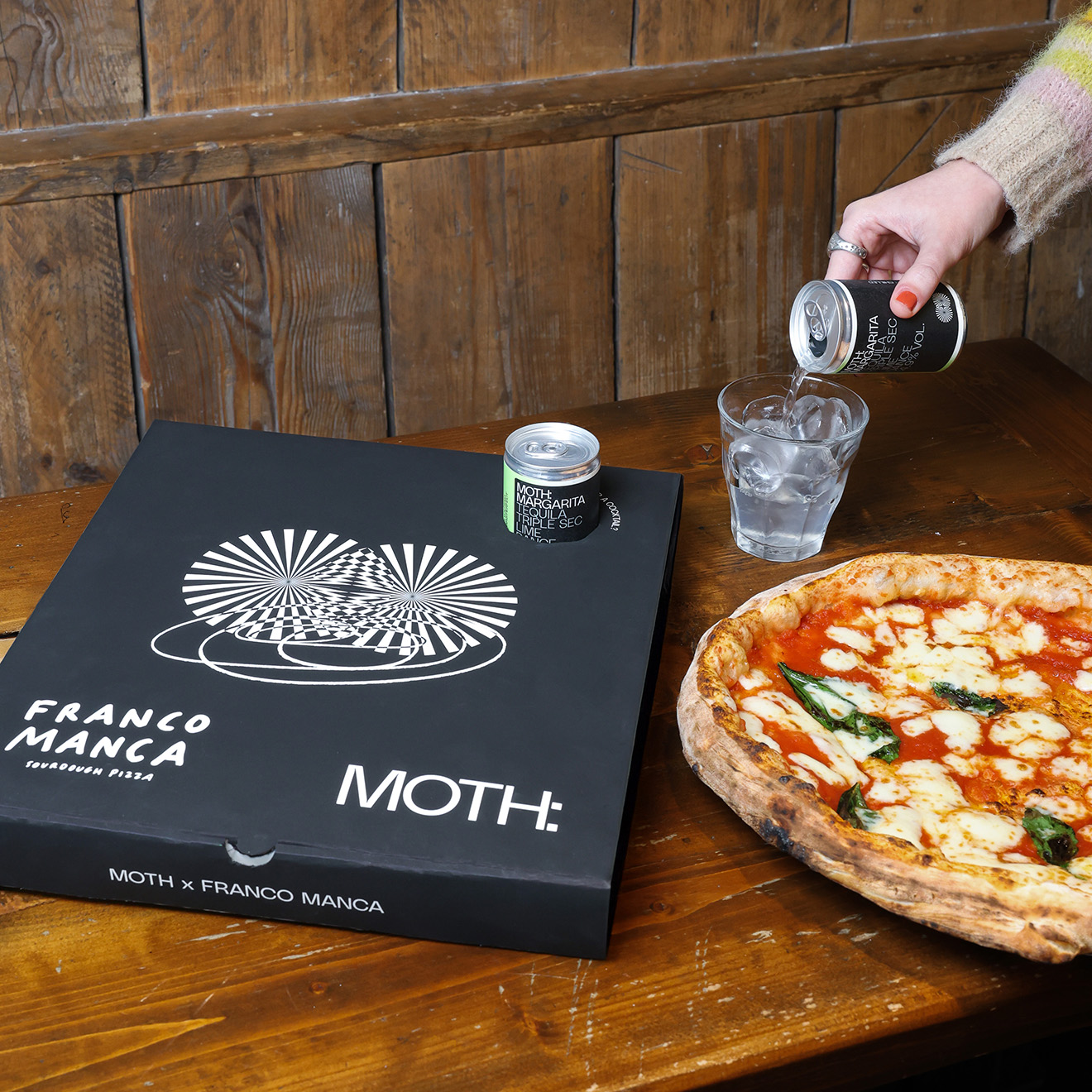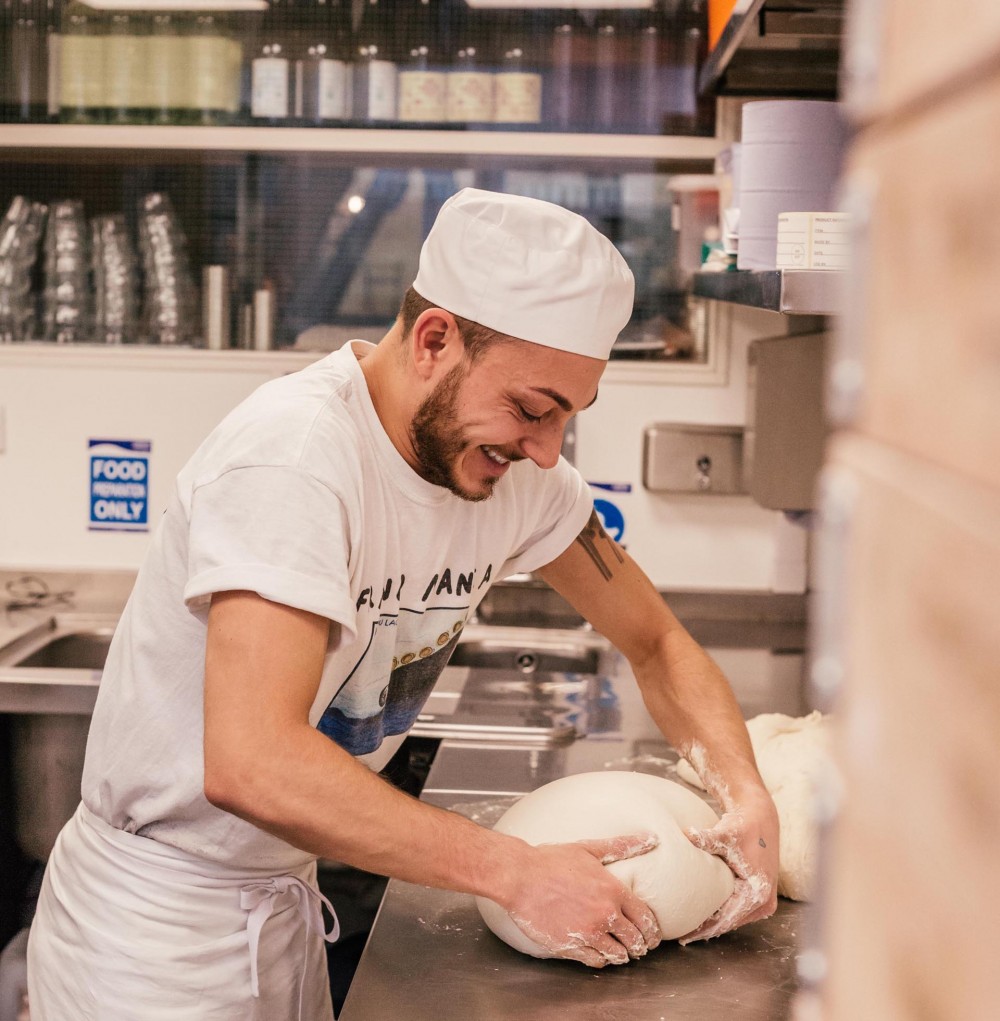
Recipes
How to make sourdough at home. The Franco Manca way
Pizza is for everyone. This recipe will allow you to make our sourdough at home, using either a sourdough starter or yeast. The dough will take about 16-18 hours to develop, so is ideal for making in the late evening for an early supper the following night. You can also make the dough in the morning for use in the evening by adding 20% more yeast. When working in this slow, natural time frame surprisingly little yeast is required. Leave the dough in an ambient temperature of 20-23˚C. If the temperature is colder (15–18˚C) it will take a few hours longer.
Prep your station
Ingredients
-
Step 1: Making the dough
- In a bowl or jug measure out the water and add the yeast or starter. Stir or whisk in, then add the olive oil.
- Place the flour and salt in a large bowl and combine the ingredients with your fingertips
- Pour the liquid into the flour in a few stages, mixing each time with stiff fingers.
- Work lightly, using only your fingers to draw the dough together and mop up all the flour. Avoid getting dough on the palm of your hand. Knead the dough a little with your knuckles.
- Once the ingredients have roughly combined you can rest the dough. This gives the flour time to absorb the water and will make the dough easier to knead.
- After 15mis use your fingers and knuckles to knead the dough for about 5 minutes. Dipping your fingers in flour will help keep the dough from sticking to your fingers while you do this.
- Once kneaded, cover the bowl with clingfilm or a damp cloth and leave the dough to sit for 1 hour.
- With a lightly oiled hand this time, fold the dough by drawing the four edges consecutively into the centre and then pressing down on them. With the shape of your hands, from a large ball and then turn the mass over. Brush a bit more olive oil on top and cover the bowl again to store, making sure it’s airtight.
- Leave the dough in an ambient temperature of 20-23 Celsius and for 16-18 hours your dough will be ready to use.
-
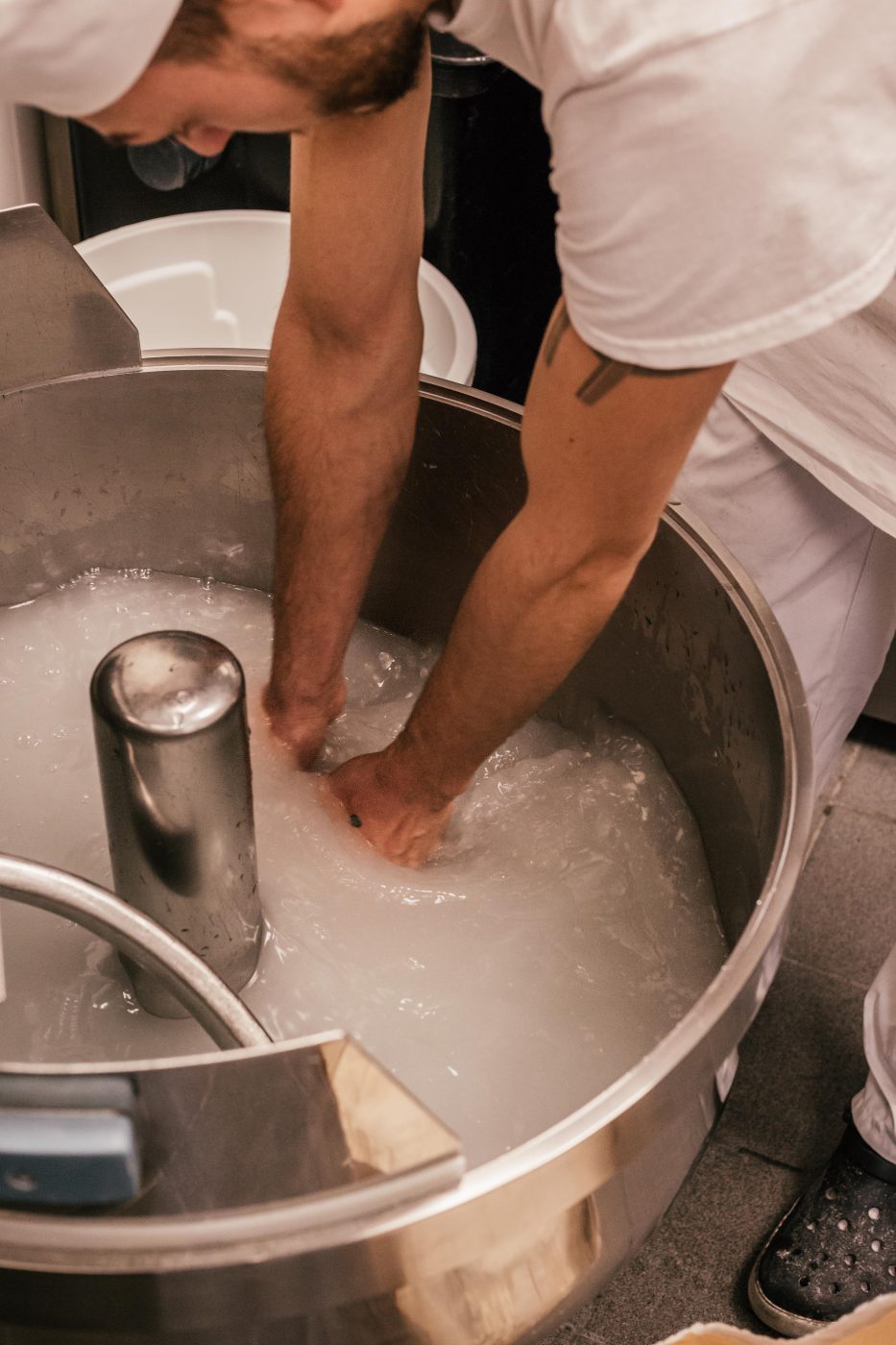
Step 2: Shaping pizza balls:
- Start with ball of dough that is opened (stretched) into shape. 160-180g pizza ball will fit easily into the base of an iron pan.
- Tip the dough onto a floured surface and divide equally about 180g each, use a scale if you wish. Knock back the dough pieces by rolling them in a circle on a table until they form tight balls by keeping a tight grip around the edges of the ball with your fingertips while applying some pressure from the palm of your hand on top.
- Place the pizza balls in a floured surface in an airtight container, make sure it is sealed or use clingfilm on it. Keep a gap of 2cm within each pizza balls. At normal room temperature (18 Celsius) the balls will take about 2 hours to prove. In a warm kitchen (24 Celsius), 1 hour will be enough.
-
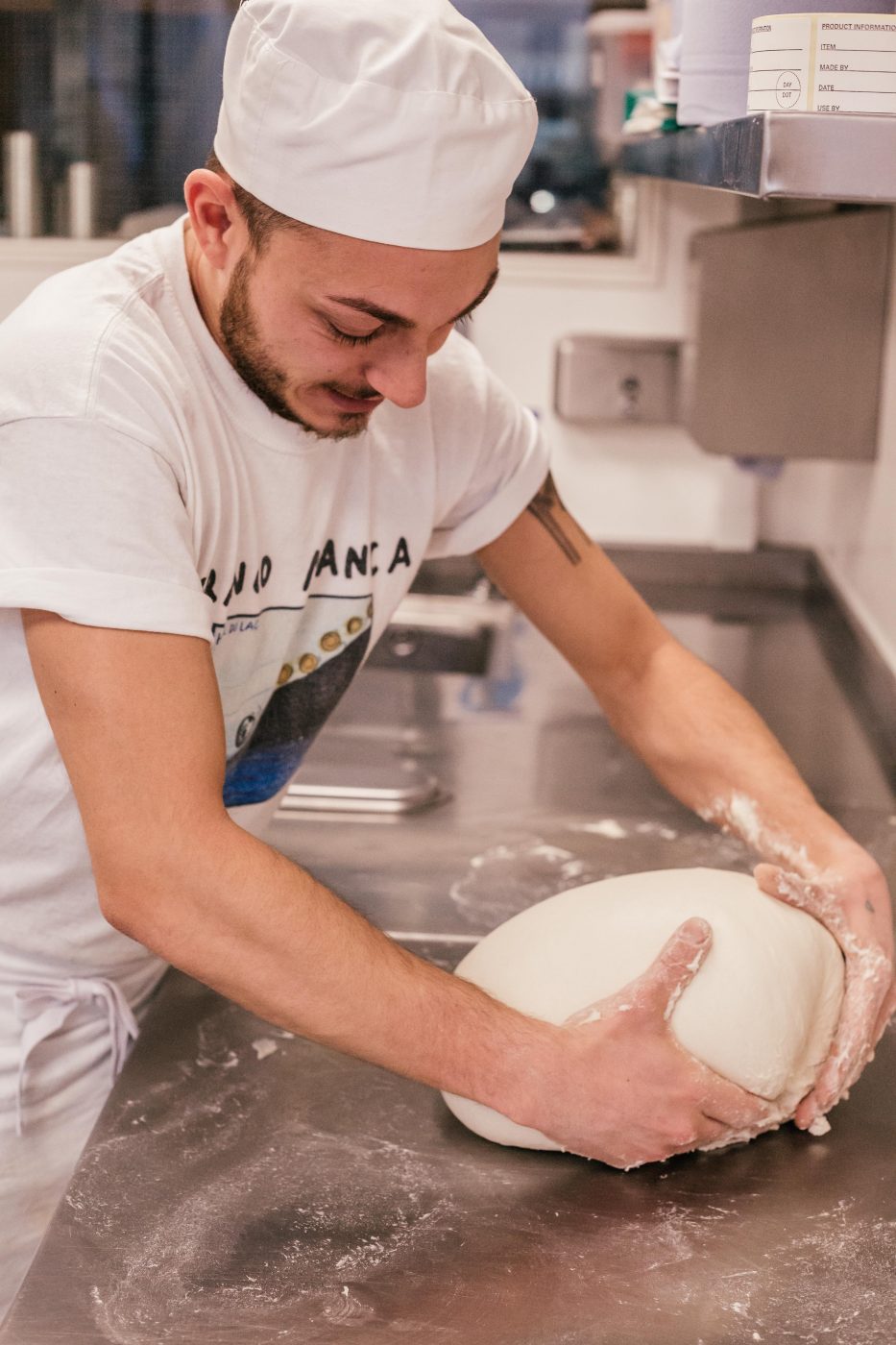
Step 3: Cooking your pizza
Baking in an iron pan
- Rub a 26cm iron pan with a little olive oil and place on the hob to get hot.
- Sprinkle a little flour on your hands and on the table. Open a dough ball by flattening and stretching the dough gently with your fingers, or by rolling the dough with rolling pin.
- Pick the pizza base up and gently, without tearing, stretch it a little further over your fists. Transfer the shaped pizza onto the hot pan.
- Once the pizza starts to bubble and turn golden underneath it will be stiff enough to add toppings. After 3–4 minutes, transfer the pan to a 250˚C oven (with the door shut) or place under a hot grill to finish. We find using a grill gives foolproof results.
-
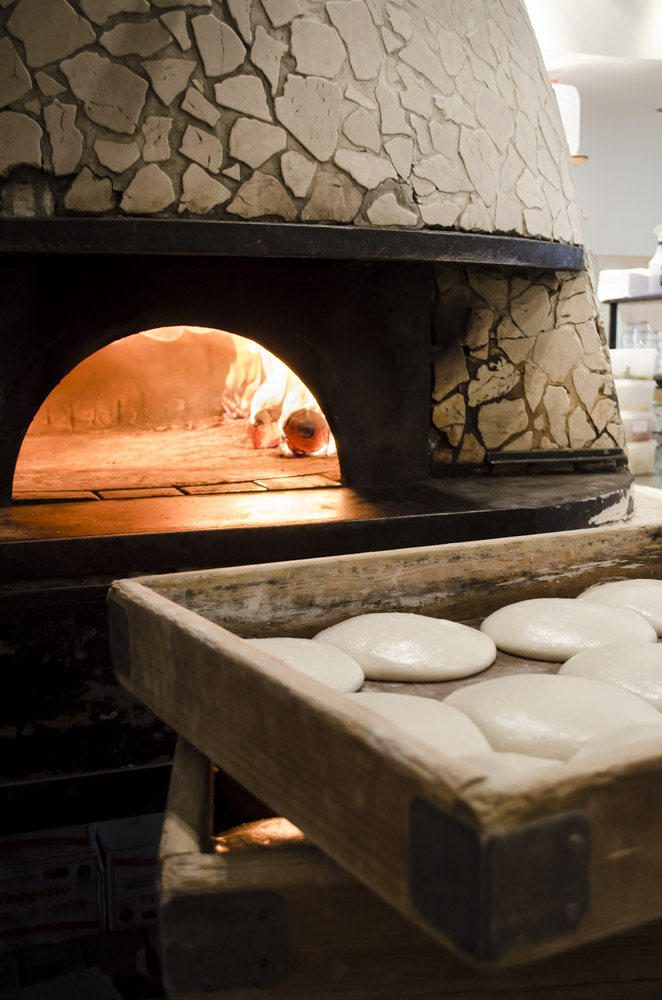
Frying
- Divide the dough into 8 or 16 pieces. Shape these into round balls, cover and leave to rise for at least an hour in a warm place.
- In a wide saucepan, warm 200ml groundnut oil (best) or vegetable oil (never olive oil) over a medium heat to reach a temperature of no more than 180˚C (if you have a probe thermometer, this will be helpful).
- Place a dough ball on a floured surface next to the stove. With your fingertips, flatten the ball into a disc, then pick this up and stretch it out a little, before placing in the hot oil.
- Cook each pizzetta for a minute or so, then turn over. Do not overcook – if fried to a dark brown the flavour will be impaired. Place on absorbent paper to soak up the oil and then add toppings while warm.
-
Stone baking
We definitely prefer the pan-baking method as, if your oven is not hot enough or the stone you are using is not the best, the dough doesn’t cook thoroughly underneath or rise enough on the stone. However, it is worth trying, and with a little experimenting, you can achieve satisfaction. Here’s the method for giving it a try.
- Turn the oven on to its highest setting and place a pizza stone on the highest rack to heat for at least 15 minutes after the oven has reached full temperature.
- Sprinkle a little flour on the peel (see page 11) and open the dough ball onto it.
- Using a peel, move the prepared pizza onto the stone and bake for about 8-10 minutes.
Enjoy your pizza!
-

Still hungry? Go for seconds.
Bringing Napoli eating culture. Closer to you.
Find a pizzeria near you. Then eat your crusts.


